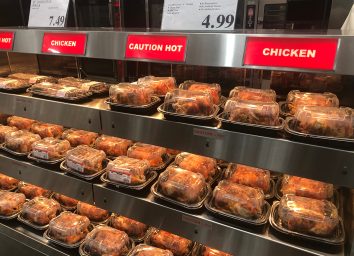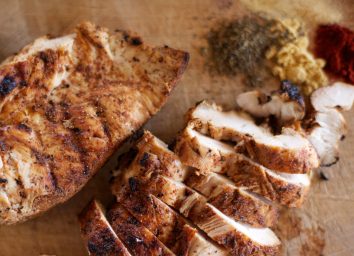8 Secrets Chicken Companies Don't Want You to Know
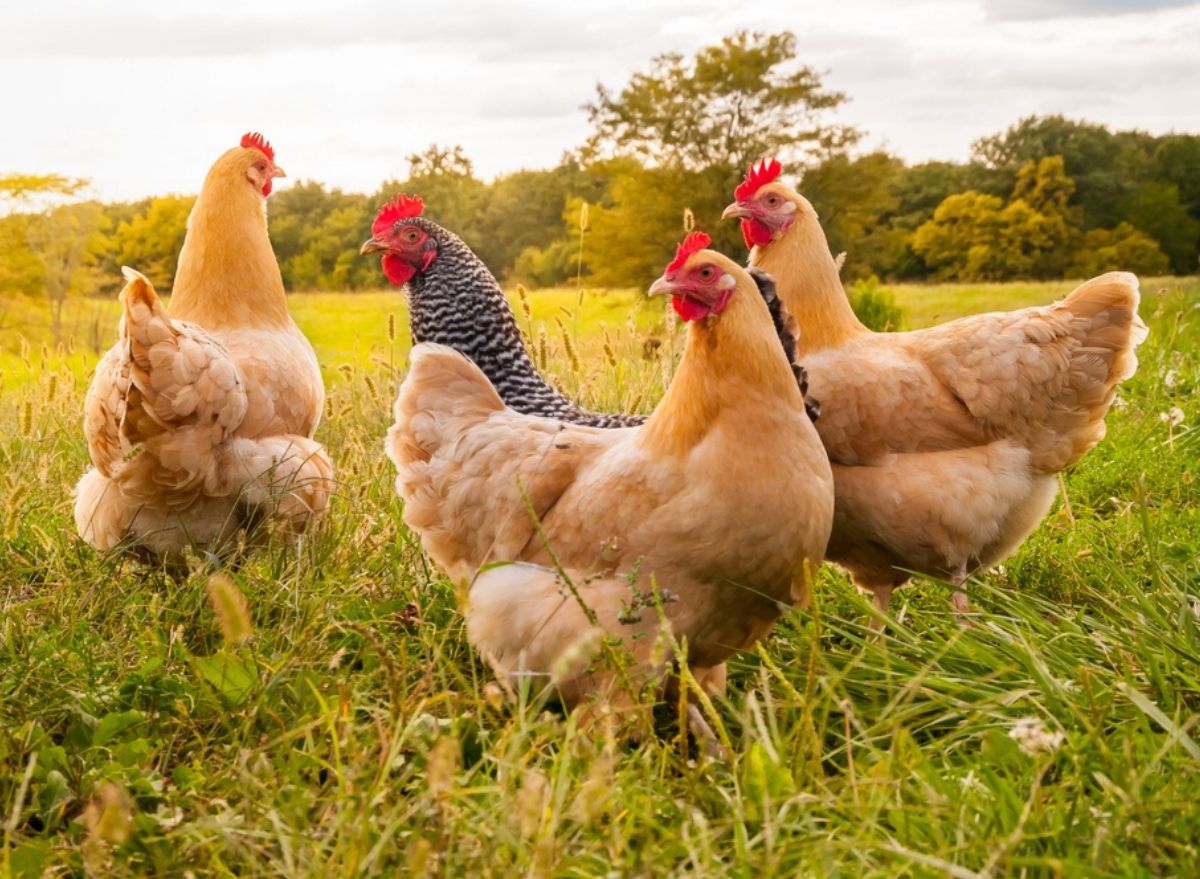
Up until very recently, pork was the most widely consumed meat on earth, on a pound-for-pound basis. According to a statistic published by the United States Department of Agriculture just a few short years ago, as of the summer of 2019 pork accounted for 36% of all meat eaten, while poultry came in second at 33%. (And yes, beef was third at 24%.)
In the last couple of years, however, things have changed. Today, according to Science Agri, chicken is the most heavily consumed meat on earth. And as you'll see based on the seventh point below, Americans account for a lot of that consumption.
If you knew everything that quietly goes on within chicken companies, however, you might not consume quite so much of this popular meat. Or at least you might start willingly paying more to get organic, free-range chicken. Because as it turns out, most of what happens to these birds in the course of their short lives is hardly appetizing and there are some awful secrets about chicken companies that are quite frightening.
Chickens raised for meat have a lifespan of about six weeks
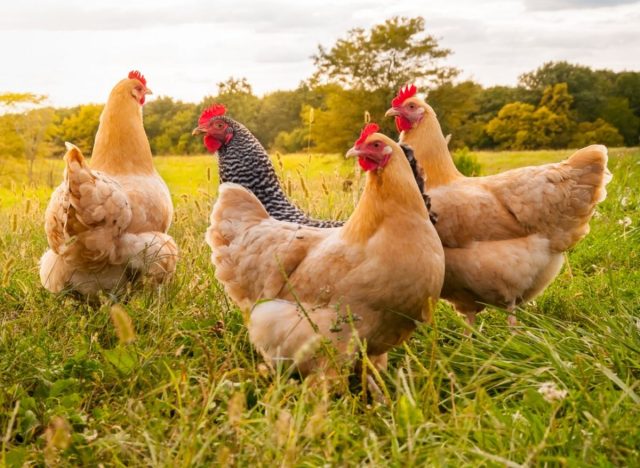
The average "broiler" chicken, meaning an animal raised specifically to be slaughtered for meat, is alive for about a month and a half, according to Compassion In World Farming. They are hatched from the egg, alive for 40 days or so, and then killed and processed. Allowed to live out their whole natural lives, according to Almanac, a chicken can live from five to 10 years. So let's assume an average chicken lifespan of seven years, which means these birds should live 60 times longer than they do.
Industrial chicken feed contains horrifying ingredients
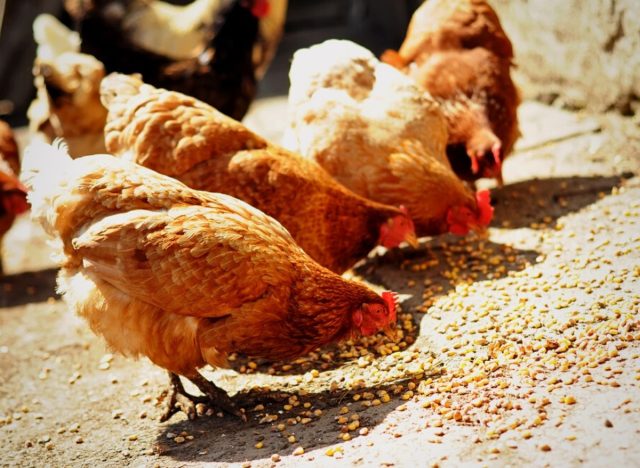
According to a Washingtonian article from 2006, the feed used to fatten up chickens at commercial-grade chicken farms is primarily made of corn and soybeans, but it also contains some gross and grisly stuff. This includes things like poultry offal, including the heads and intestines and such from previously slaughtered birds, shell and egg scraps, often with dead chicks as well, bone and feathers, and lard from dead cattle, to name a bit.
Chickens raised for meat are so overweight many can't walk
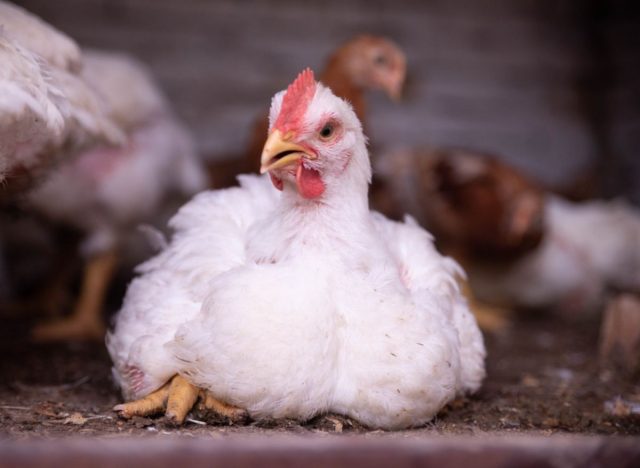
According to The Human League, years of selective breeding that has seen the mating of ever-larger birds and the heavy, unhealthy feeding practices of the poultry industry have led to generations of chickens that are so obese they cannot walk for much of their lives. Many broiler chickens end up so heavy they cannot even stand and end up dying even before the slaughter due to lack of hydration or nutrition.
Fast-food chicken nuggets have skin in them
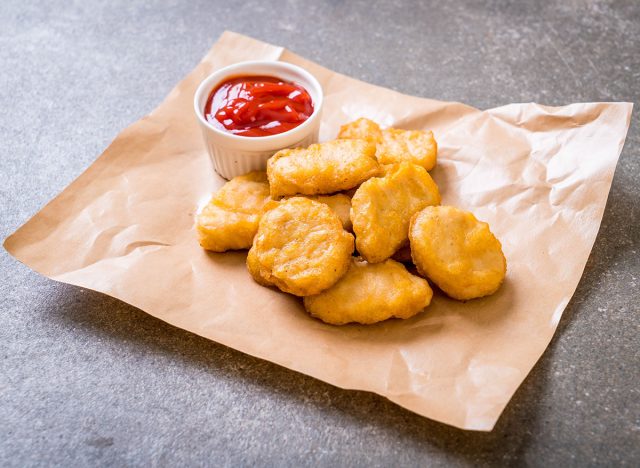
OK, so those McNuggets (or non-McDonald's-brand chicken nuggets) you love probably aren't made with so-called "pink slime," and that's a good thing. But according to The Daily Meal, they do contain a host of ingredients you'd surely just as soon not eat, such as sodium phosphates, modified food starch, salt, dextrose, citric acid, autolyzed yeast extract, and some chicken skin added in for… extra flavor.
Many chickens are kept in cages the size of a piece of paper
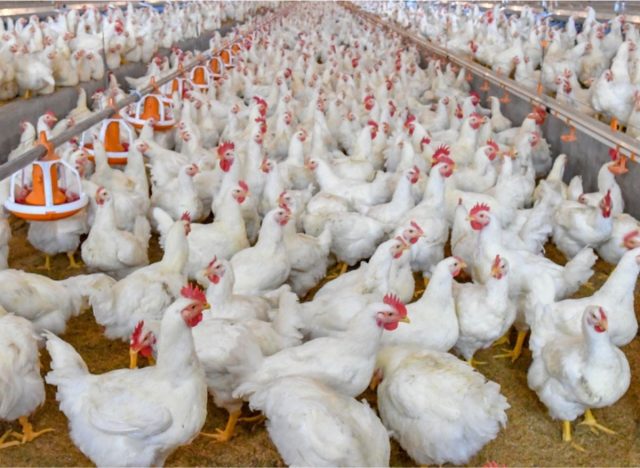
According to Huff Post, many chickens will live out their "lives," if they can be called that, in a cage that's about 67 to 76-square inches in size. That is, for reference, smaller than a standard sheet of A4 paper such as you would use in a printer, which is 93-square inches. And these are not the broiler chickens that will live just 40 days, these are egg-laying hens that may "live" for about two years.
Millions of chickens are 'culled' some years to prevent bird flu spread
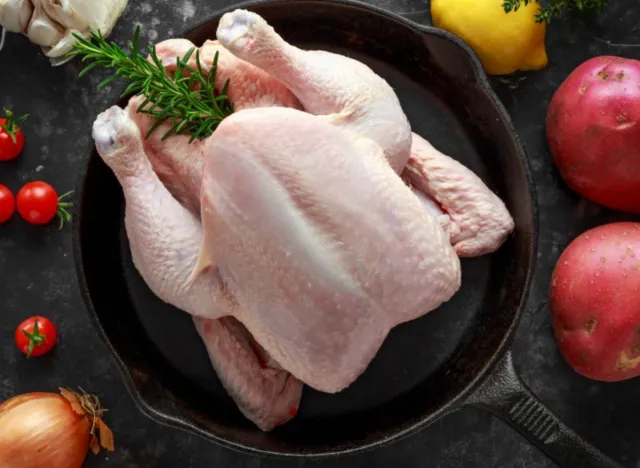
In 2022 alone, more than 22.8 million chickens in America have died as a result of a strain of highly infectious bird flu, according to NPR. But this has happened many years before, most of the chickens that have died as a result of this HPAI ("Highly Pathogenic Avian Influenza") endemic did not succumb to the disease itself, but were slaughtered and discarded (euphemistically called "culling") to prevent further spread of the disease.
Chicken beaks are often clipped
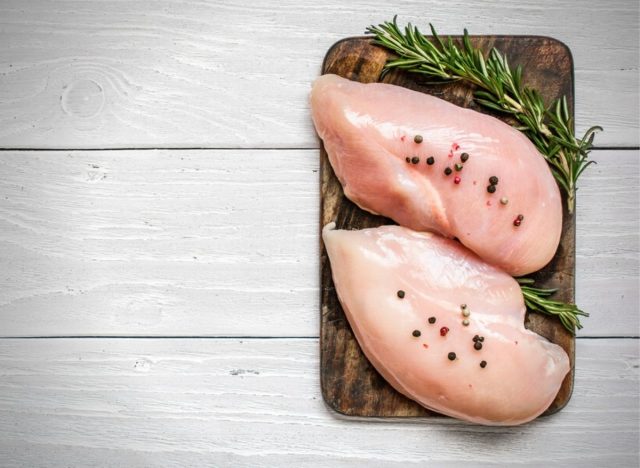
According to The Guardian, chickens raised in the tight confines of crowded barns used to have their beaks almost entirely cut off in order to prevent the birds from pecking at one another. Today, that savage practice has been ended, but birds still routinely have the tips of their beaks clipped off, which can reduce the level of damage the animals can do to one another but which of course also inflicts misery and makes it harder for them to eat and drink. Another way to prevent birds from fighting? Raise them with enough free space for a baseline of comfort.
Nine billion chickens are killed for food every year in America alone

The sheer scale of chickens raised and slaughtered for meat each year is still pretty staggering. According to The Human League, more than nine billion chickens are killed for food each year in the United States alone. That's about 27 chickens per person, given the current U.S. population of 332,403,650, care of the U.S. Commerce Department.
READ MORE: 7 Fast-Food Chains That Use the Highest Quality Ingredients

